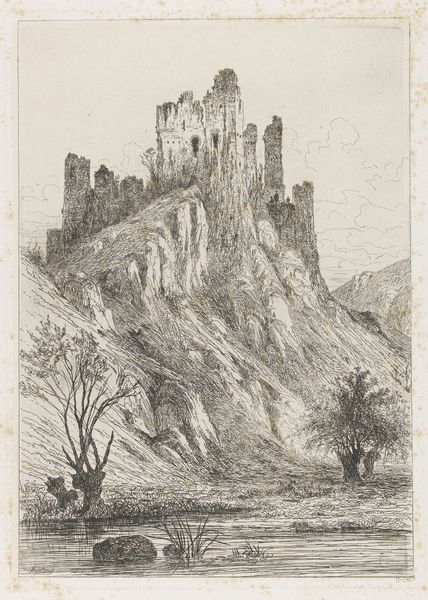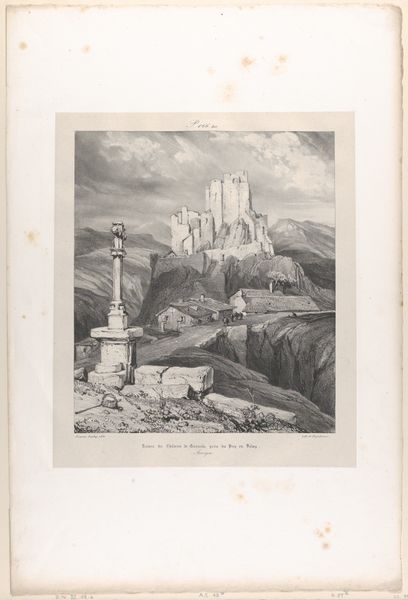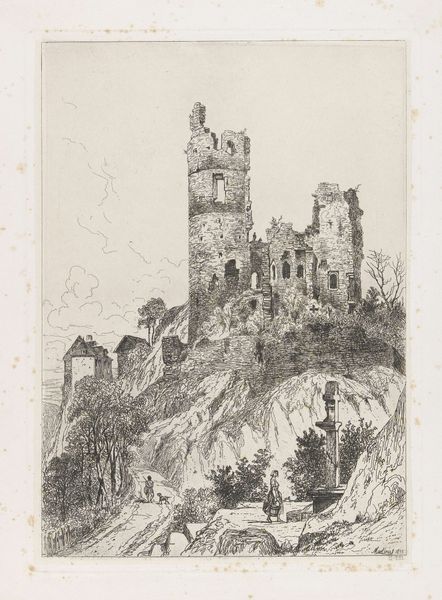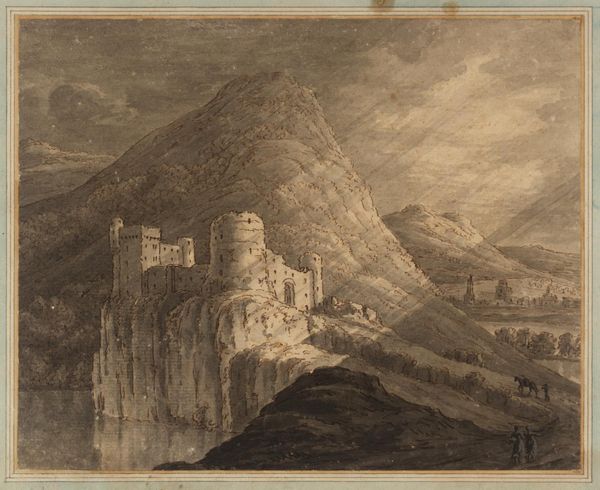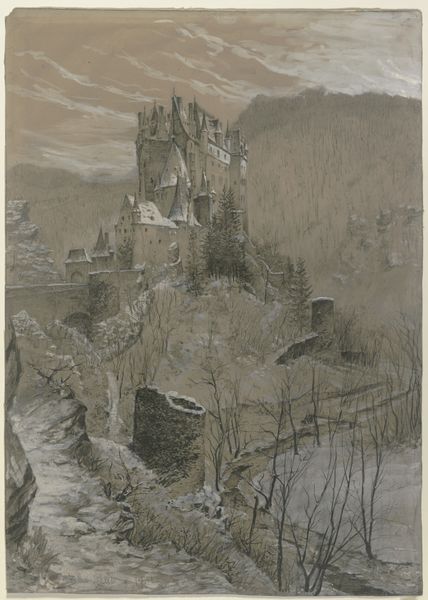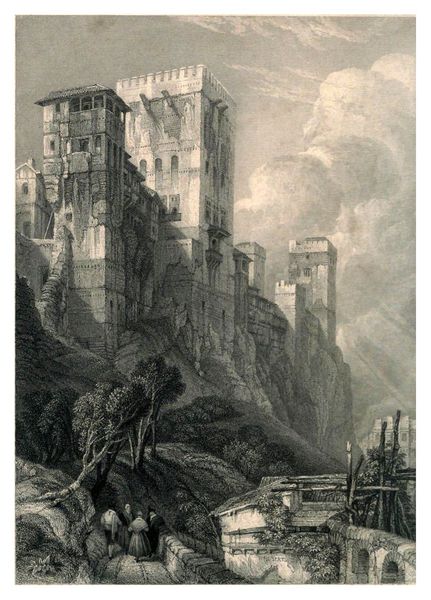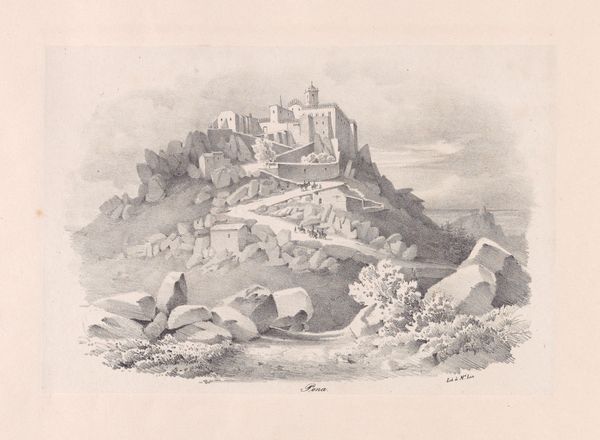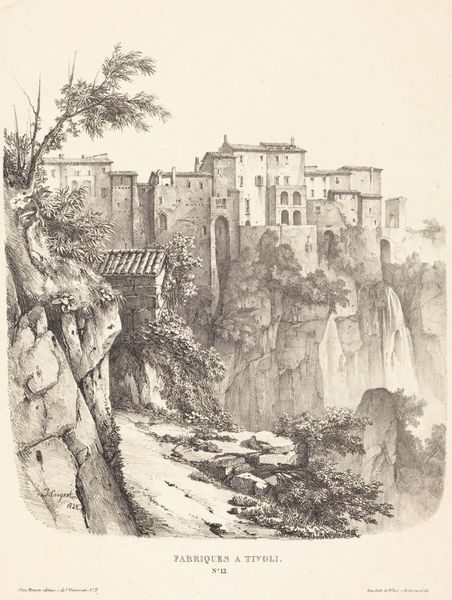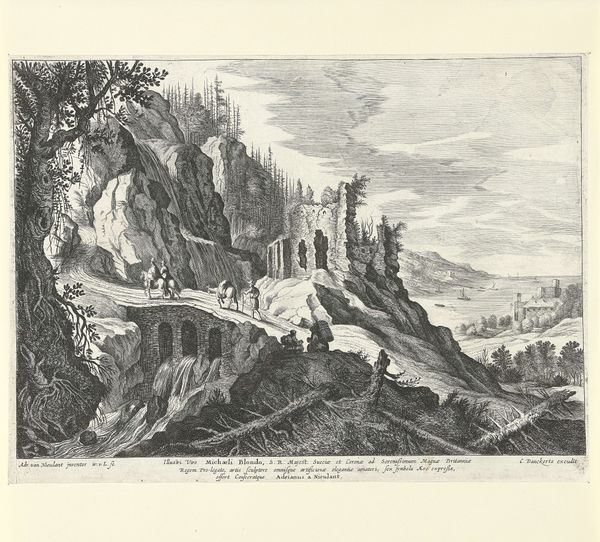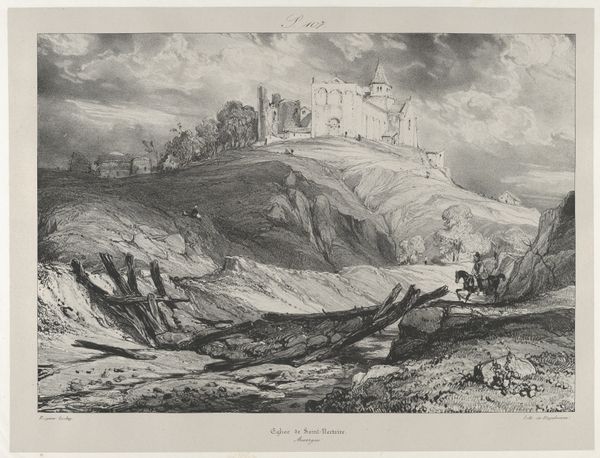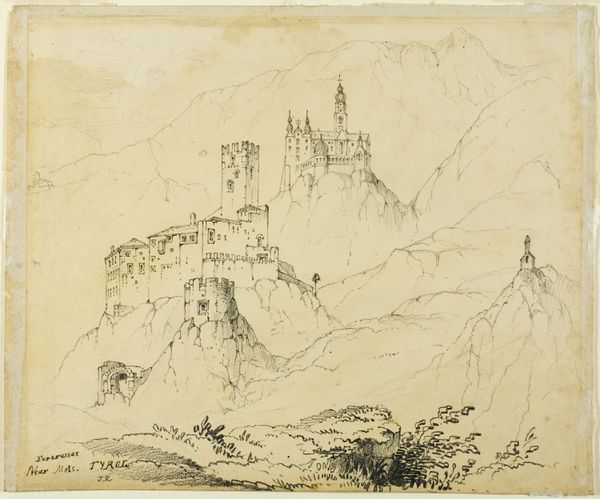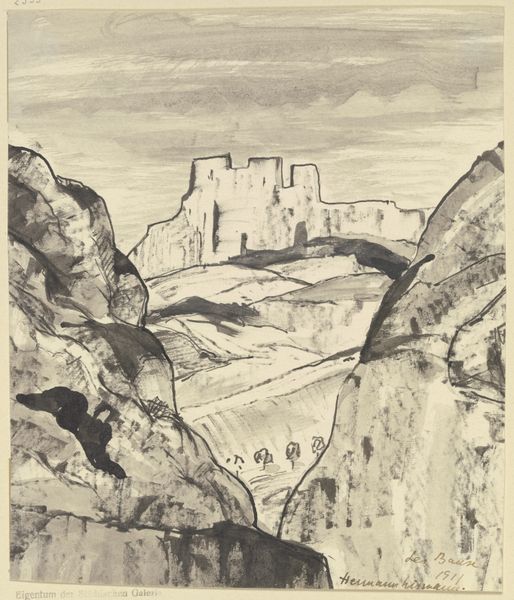
drawing, print, pencil
#
drawing
# print
#
pencil sketch
#
landscape
#
romanticism
#
pencil
#
cityscape
Dimensions: Sheet: 20 7/8 × 13 7/8 in. (53.1 × 35.3 cm) Image: 12 13/16 × 10 13/16 in. (32.5 × 27.4 cm)
Copyright: Public Domain
Editor: Eugène Isabey's "The Bouzols Castle Ruins Near Puy en Delay," created in 1831 with pencil, offers a striking depiction of a bygone era. The castle dominates the landscape, yet it feels melancholic, almost spectral, rendered in monochrome. What elements contribute to this feeling? Curator: That feeling of melancholy is deeply rooted in the Romanticism of the period. Isabey isn't just depicting a castle, he's presenting a commentary on the decay of feudal power and the rise of a new social order. The ruin itself becomes a symbol of that shift, wouldn’t you agree? Editor: Yes, definitely. But how does the choice of the medium affect our perception of that symbolism? It feels much less grand when rendered in pencil. Curator: Exactly. Pencil sketches like this one were often preliminary studies, circulated among artists and collectors, building a sense of shared appreciation for specific sites or motifs. By disseminating imagery of these ruins through prints and drawings, artists participated in shaping a public consciousness around national heritage. Consider the accessibility this afforded; more people could engage with these romantic landscapes. How might that shape public opinion on cultural shifts? Editor: So it is not just about capturing the image of the castle, but influencing how people perceive the social relevance and the historical narrative? Curator: Precisely. The 'ruin' becomes not just a visual subject, but a site of political meaning. Consider also where this work is housed now—The Met. Think about the journey it takes through its collection. Does it influence the political history the drawing can convey? Editor: That’s fascinating. It adds another layer of meaning knowing it’s in the Met now. I had not considered its power as a political document. Thank you! Curator: My pleasure!
Comments
No comments
Be the first to comment and join the conversation on the ultimate creative platform.
